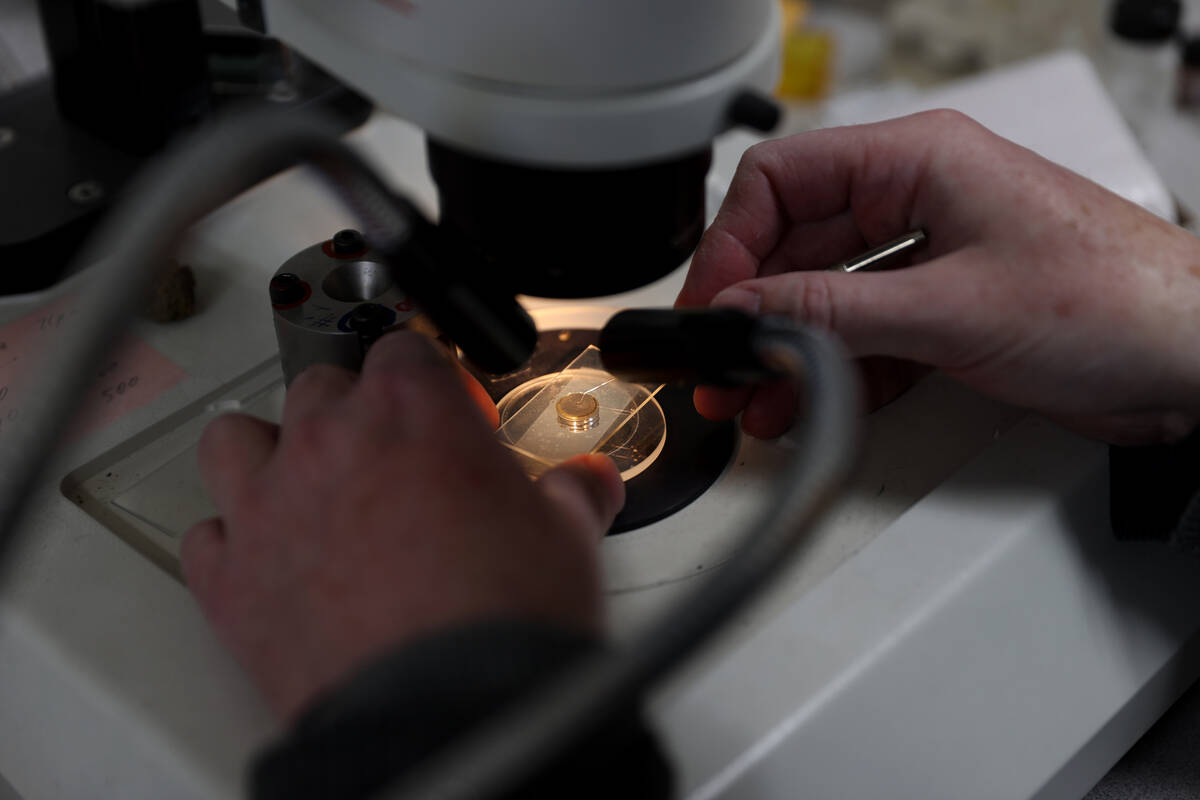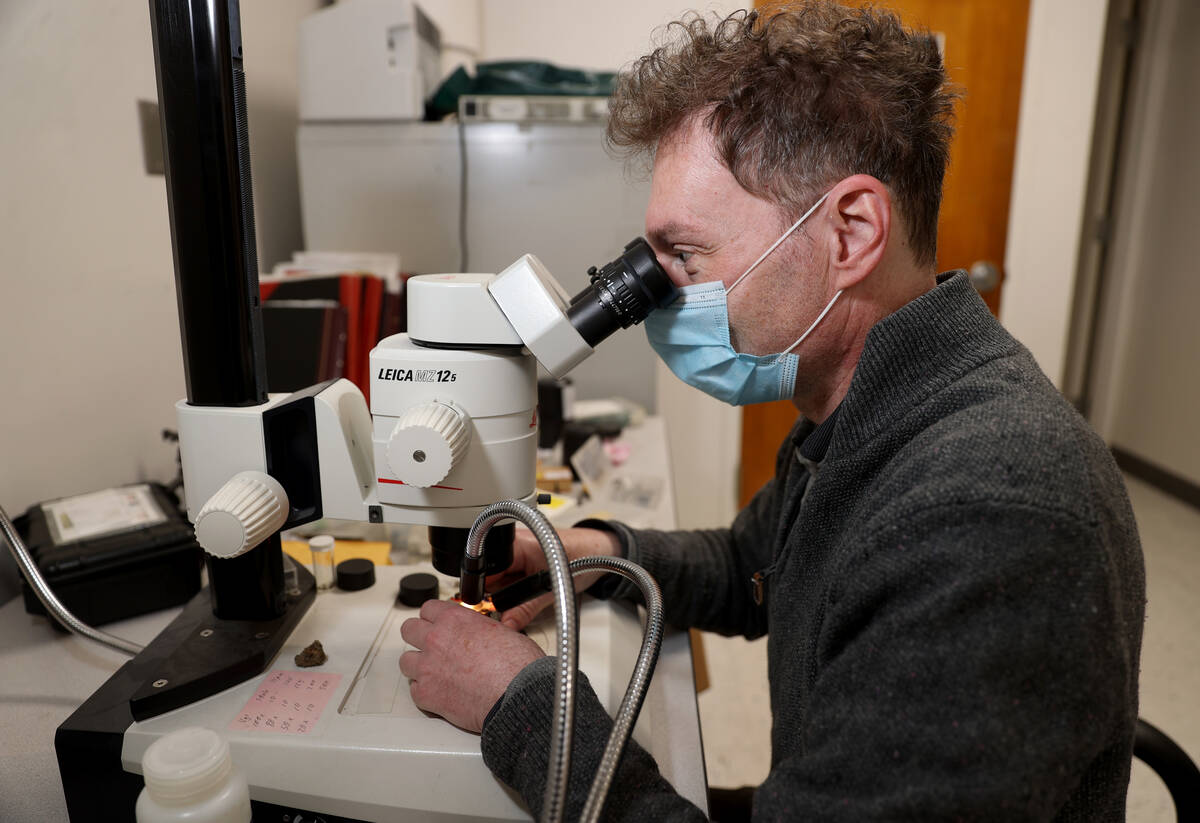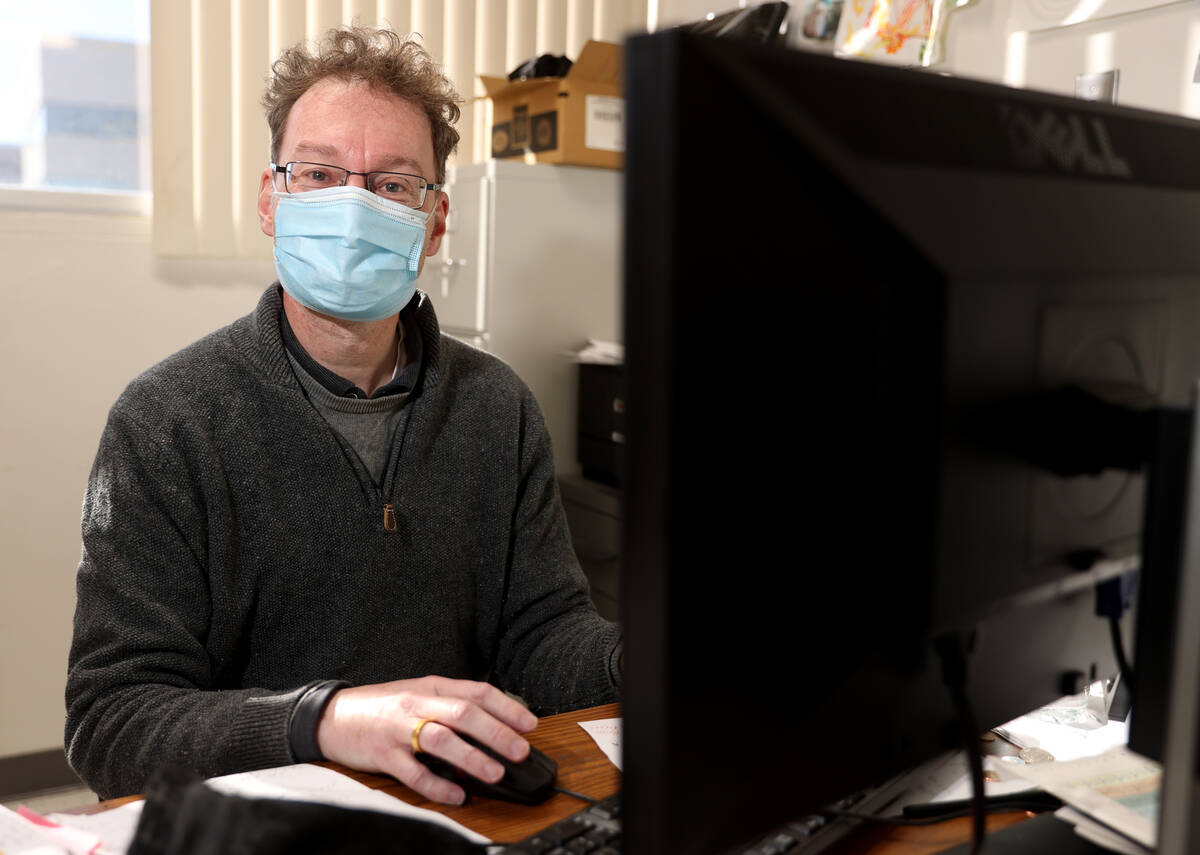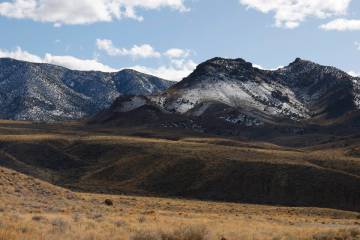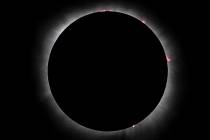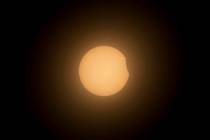From the center of the earth to UNLV: Unlikely journey leads to breakthrough
Using a diamond as their vessel, tiny specks of mineral blasted upward from the Earth’s lower mantle survived a harrowing journey of hundreds of miles amid unbelievably high temperatures and colossal pressures to end up in the hands of UNLV researchers.
Diamonds are rare, but the specks that clouded this particular gemstone and diminished its value as a jewel were the real prize for the scientists: tiny pieces of a previously unknown natural mineral that was formed deep within our planet and expelled to the surface in a violent volcanic eruption.
A team led by UNLV mineralogist Oliver Tschauner discovered the crystalline compound made up of calcium silicate perovskite within the diamond, unearthed from an African mine decades ago. They named the new mineral “davemaoite” in honor of Ho-kwang “Dave” Mao, a renowned Chinese-American geologist, and reported their findings last month in the prestigious academic journal Science.
“This is a very special mineral because it comes from great depth,” Tschauner told the Review-Journal, explaining that most diamonds are formed much closer to the Earth’s surface.
An amazing journey
The fact that the calcium silicate perovskite sample survived the violent trip to the surface is itself astonishing, Tschauner said, adding that if the specks had been any larger the diamond would likely have cracked, causing the compound to disintegrate. That would happen because the material “cannot retain its structure after being removed from a high-pressure environment,” the research’s summary states.
Scientists have theorized for decades that silicate perovskite exists in the Earth’s lower mantle, which ends approximately 410 miles beneath the surface. But proving it was another matter, given its propensity to fall apart at lower pressures near the planet’s surface.
The only previous evidence that pointed to the likely presence of the compound deep within the planet came from a meteorite, according to the Carnegie Institute of Science. Samples from the Tenham meteorites, which fell across a wide area on Queensland, Australia, in 1879, contained a slightly different silicate compound. That led scientists to infer that the chemical and mineral changes found in the meteor’s high-pressure deformations might also occur within the Earth’s lower mantle.
“The two form an exclusive club as the only lower-mantle silicate minerals confirmed in nature,” Carnegie researcher Yingwei Fei wrote in an essay that accompanied the UNLV team’s publication of its discovery in Science on Nov. 11.
The yearslong findings of the team, which included UNLV geochemist Shichun Huang, were recently approved by the International Mineralogical Association’s Commission of New Minerals, Nomenclature and Classification, which has members from 38 countries.
‘A tough procedure’
“This is a tough procedure,” said Tschauner, explaining that the organization rejects more than 90 percent of the minerals proposed for inclusion in its official list of “mineral species.”
The organization has logged fewer than 6,000 minerals in total since its founding in 2006. in recent years, it has typically added between 10 and 20 new specimens annually in recent years, said professor Peter C. Burns, Notre Dame’s Center for Sustainable Energy director and onetime president of the International Mineralogical Association.
Davemaoite is “more significant than the majority,” he noted. “It might have been a one in a decade discovery. Maybe one in 20 years.”
Tschauner, a German citizen who teaches mineralogy, crystallography and dynamic compression at UNLV, estimates that the diamond originated from 410 to 560 miles below the Earth’s surface, far deeper than most diamonds are formed.
The diamond was unearthed from the Orapa mine in Botswana Africa. Tschauner said the eruption that blasted the diamond to the earth’s surface occurred between 92 million and 93 million years ago, though the diamond itself was “much older.”
In 1987, a gems dealer sold it to a California Institute of Technology mineralogist, which is how the UNLV team was able to gain access to it in 2017.
The diamond was examined in the Advanced Photon Source in Lemont, Illinois, a vast complex at the U.S. Department of Energy’s Argonne National Laboratory that “provides ultra-bright, high-energy storage ring-generated x-ray beams for research in almost all scientific disciplines.”
“The APS works like a giant X-ray microscope,” according to the laboratory. “It produces extremely bright X-rays that can peer through dense materials and illuminate the structure and chemistry of matter at the molecular and atomic level.”
Burns said that enabled the UNLV team to employ “methodologies … to interrogate that tiny speck in the diamond and prove that it was in fact the mineral that had been hypothesized to exist there in the mantle.”
What comes next
Tschauner said the findings proved for the first time that there is vast amounts of carbon in the lower mantle.
It also included something entirely unexpected.
“The one thing that puzzled us, or surprised us, was the high content of potassium,” he noted.
Tschanuer said he expects the discovery to trigger new research to help map and evaluate how much mass is exchanged between the lower and upper mantles, and how much material from the Earth’s crust returns to the lower levels. It can also provide a better picture on how the Earth has evolved over billions of years, he said.
“This time we could not get good trace element compositions,” he said. “So we hope that next time we see it we can actually get that information, too.”
Burns said that one possible application of the discovery would be to study how pollutants get transported via groundwater to the Earth’s subsurface and “whether or not the contaminant will end up poisoning water supplies.”
“Basically, if you want clean water in today’s world, you have to understand the mineralogy of the subsurface where the water comes from,” he said, describing Tschanuer’s discovery as “quite exciting.”
Tschanuer said he will be involved in future research, “to a degree,” but added that “I don’t need to have my finger in everything.”
The samples will now go to the Los Angeles County Museum of Natural History, where they will be available for future research by other scientists.
“It’s pretty easy as a mineralogist to pick up samples near the surface,” Burns said. “Studying actual samples that came from several hundreds of miles in the Earth is really, really a rare opportunity, and frankly, almost nobody’s achieved it.”
Contact Ricardo Torres-Cortez at rtorres@reviewjournal.com. Follow him on Twitter @rickytwrites.



